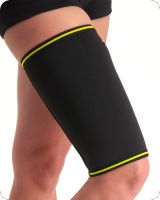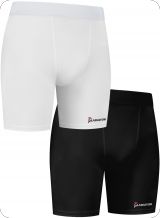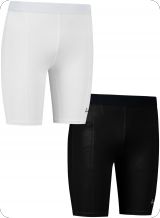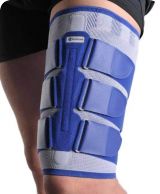Pain in thigh
Pain in the upper leg is common at all ages. Usually, this pain results from problems in the muscles. These complaints are especially common in people who play sports frequently. Are you curious to learn more, such as its causes and treatment? Then feel free to read on. We are happy to explain.
Anatomy of the upper leg
The upper leg consists of the femur and two adjacent joints, namely the knee and hip. The thigh muscles can be divided into three groups: front, inner and back. At the front, there are 3 muscles. Together, these muscles help stretch the knee and flex the hip. The muscles in the back are also called the hamstrings. These help stretch the hip and bend the knee. The muscle group on the inside of the thigh are also called the abductors. These provide rotation of the hip and inward movement of the leg.
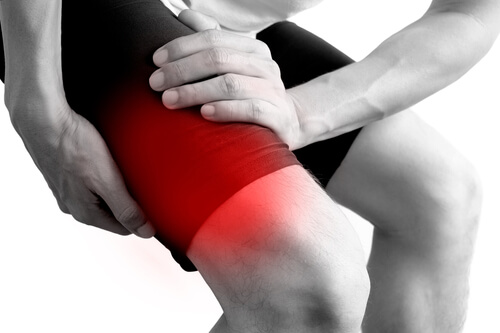
Causes of thigh pain
There are several injuries that can cause upper leg pain. Each injury has its specific cause and symptoms. The cause of pain can be determined by where the pain is located and the type of pain. The most common causes of upper leg pain are:
- Hamstring injury; this results from a sudden increase in strength or acceleration
- Ice bone; this is a muscle bruise in the thigh
- Tendinitis; tendons are located at the end of muscles and can become inflamed
The symptoms in upper leg pain
Upper leg pain can occur in different places. Most often, the pain arises in the hamstrings. When force is applied quickly, small tears can develop in the muscle. This causes the upper leg to hurt or even inflame. This often happens during exercise. Usually, the pain is nagging. This pain gets temporarily worse at the initial stage and after the end of sport.

Treatment
When treating thigh pain, it is important to first identify the cause. Then treatment can be considered. It usually consists of taking enough rest and stretching the thigh muscles. By stretching the muscles, you prevent stiffness. Next, you can do various exercises to strengthen the muscles.


